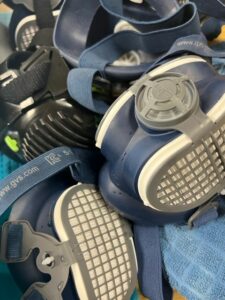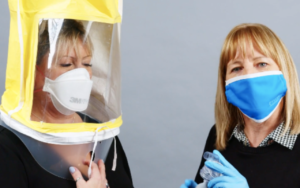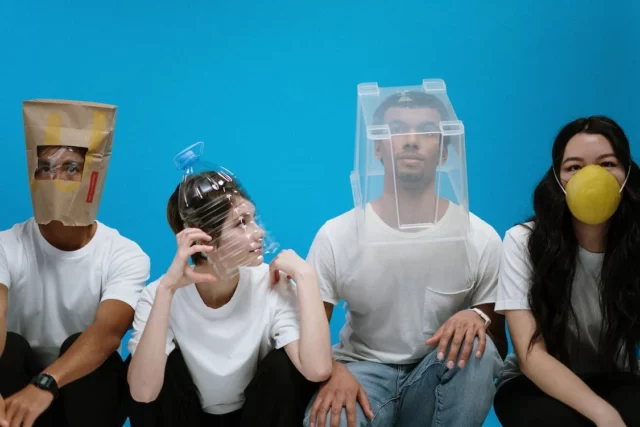Previously, seeing someone wearing a face mask has been something of a mystery, I doubt any of us ever thought it would become the norm. We have gone from not understanding which way up they should go, to then getting inventive and crafting them from all manner of materials. Meanwhile in 2020, it was said that the face mask was the best selling product. With the outbreak of Covid-19 and with that the progression of the mask fit testing industry.
Throughout history, face masks have been used to serve many purposes including protection and to conceal identity.
Masks throughout History
During the plague, the beak-doctors used a bird-like mask created by Charles de Lorme. During this same period, Leonardo DaVinci developed the use of wrapping a damp cloth around his face, to stop the toxic paint fumes from entering his lungs. It is now commonplace for painters and decorators to wear a face mask to avoid inhalation of harmful chemicals.
The 1918’s Spanish Flu pandemic saw the widespread use of masks amongst the Western world. With healthcare workers quickly catching on that a mask was an easy way to protect themselves. These facemasks were woven material such as a bandage adapted to go around the nose/mouth and fasten behind the head.
The brand Kleenex began its life as a developer of crepe paper. This method was worn by soldiers introducing the concept of the replaceable filter within a fitted mask.
Chinese Scientist, Wu Lien-teh developed a new mask using gauze layered into a cotton envelope, which tied around the back of the head. These could be fiddly but are now the basis of the modern disposable mask. In 1961, the company 3M took on a revolutionary design by Sara Little Turnbull. This was a moulded not woven material, using her design created for the simple bra cup. This first protocol was rebranded as a dust mask as it was not good enough to filter pathogens, but this was just the beginning of the idea. This has developed into the FFP masks we use in medical or industrial settings today. These masks are created with a layer of filtering material that will allow different levels of personal protection.
Different Levels of FFPs in Mask Fit Testing
There are three different levels of Filtering Face Pieces (FFP): FFP1, FFP2, FFP3. 
FFP1
An FFP1 is designed to filter at least 80% of particles that are 0.3microns in diameter or larger.
FFP2
FFP2 is designed to filter at least 94%.
FFP3
FFP3 at least 99%. An FFP3 mask is also suitable to be used whilst dealing with building materials such as asbestos. FFP3 provides the greatest level of protection.
These levels of FFP are strictly monitored by the European Committee for Standardization under the EN standard 149:2001. Respiratory Protective Equipment (RPE) must be Adequate and Suitable for Purpose. Adequate meaning correct for the hazard it is required to protect from, and suitable must mean that the wearer can carry out their task safely without added risk. RPE is considered as the last line of protection, ideally there should be provisions in place so that the individual is not exposed to hazards, if this is not possible then RPE can be adopted. Selecting the correct RPE for the wearer requires an understanding of the exposure (hazardous substance and the amount of it in the air) the form of hazard (such as gas/particle/vapour/liquid) and the specific requirements for the individual wearer of the RPE such as eyeglasses.
 Quantitative and Qualitative Mask Fit Testing
Quantitative and Qualitative Mask Fit Testing
For RPE to be effective, mask fit testing must be carried out. One mask does not fit all! Masks can be reusable, disposable, full-face, half-face and many different brands, shapes, and sizes. You can be fit tested by a form of Quantitative or Qualitative, one using a manual form of testing relying on the wearers taste sensation, the other using a machine that counts the molecules in the air. Once you have been fitted by an accredited Fit2Fit tester you must ensure that you have regular re-tests or a test if there is any change in facial shape or additional PPE.
For more information on Fit Testing, please do not hesitate to get in touch and we will help you with any mask fitting enquiries.
Email andy@cavity-fit-test.co.uk or phone 0118 214 6192.
